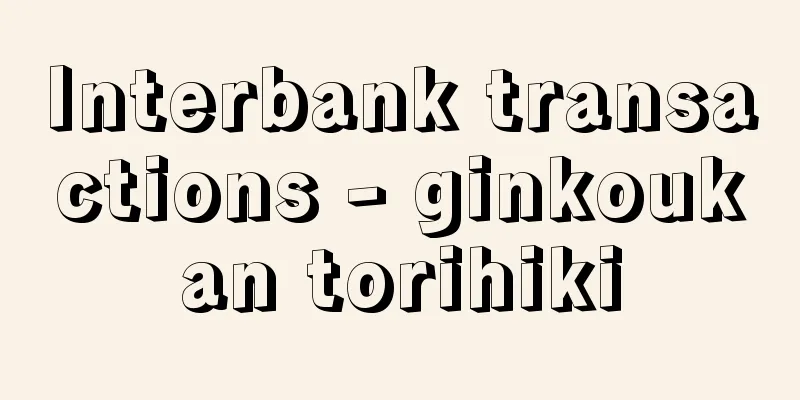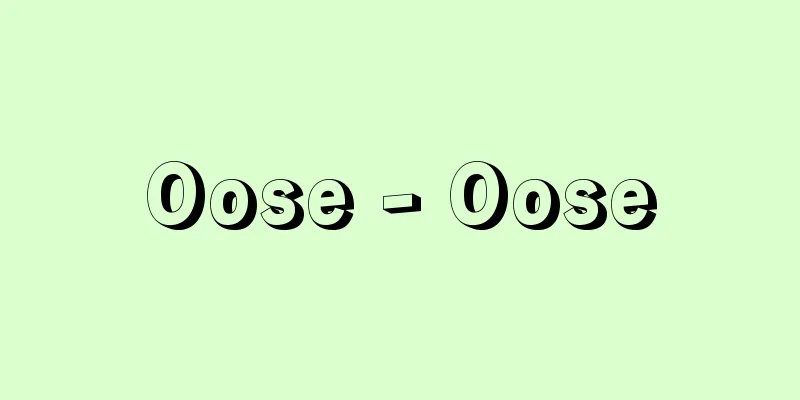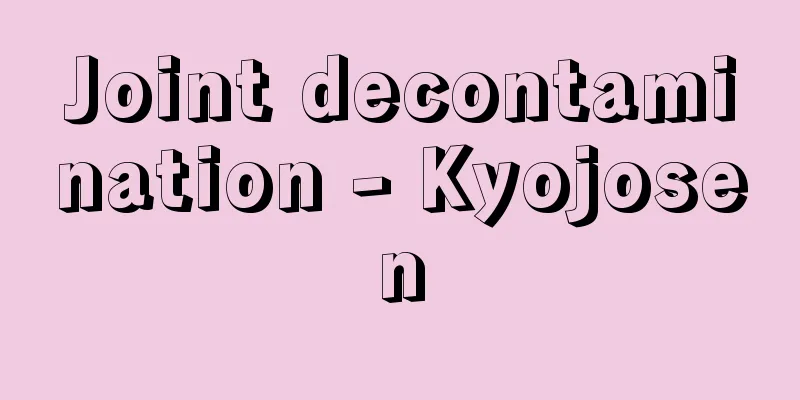Kurdish - Kurd (English spelling)

|
An ethnic group whose native language is Kurdish, a northwestern branch of Iranian. They are roughly divided into two groups: the Kurmanji, who live in Turkey, Armenia, Azerbaijan, and northern Iraq, and the Kurdi, who live in Iran and Iraq. The former contains many loanwords from Turkish and Arabic, but retains the older form in terms of sound and form. They appear as Kardaka, an ethnic group east of Lake Van, in Sumerian inscriptions from around 2000 BC. Around 1000 BC, they were known as Kurtiers, and around the 5th century BC, the Greek soldier and historian Xenophon called them Kardokoi. Today, they are known as Kurto in Turkey, Kurds in the Arab world, and Kordos in Iran. Most of the Kurds live in mountainous areas, and many of them are engaged in sheep and goat farming, and fruit, wheat, and rice cultivation. They formed tribes (asira) with strong territorial characteristics, and the head of the clan, the agah, was responsible for carrying out ceremonies and trials, collecting fines and taxes (ahti) from members, and entertaining outsiders, and the position was inherited by the eldest son. Specific records of the Kurds' activities are from the Islamic period onwards, but before that they were Zoroastrian and Jewish. After Islamization, most of them were Sunni, and were influenced by the Qadiriyya (Qadiri order) of the mystical sect (tariqa). About one third were Shiite. They were initially used as tribal troops under Arab and Persian dynasties, but in the 10th century they founded the Marwanid dynasty (983-1085) centered in Diyarbakir, and the Lawadid dynasty of Azerbaijan (early 10th century-1071). Saladin of the Ayyubid dynasty was also a Kurd. In the 17th century, the border was drawn between the Ottoman Empire and the Safavid Empire, dividing the Kurdish region and giving rise to a number of small states ruled by tribal leaders in a feudal lord-like way, a situation that continued until the 19th century. The survival of the tribal system is evident from the fact that 305 tribal names were identified in Turkey at the end of the 19th century. In the 20th century, with the establishment of the Republic of Turkey and the Pahlavi dynasty of Iran, the division of the country into these two countries and the former Soviet territories of the Caucasus, Armenia, Georgia, Azerbaijan, and Syria became fixed, and independence movements and rebellions began to occur one after another in various places. In Iran, the People's Republic of Kurdistan was established in Mahabad after the Second World War, but collapsed within a year. During the Iranian Revolution in 1979, several factions were formed and the nationalist movement in Kurdistan became active. In Iraq, under British rule, the Kurdistan Declaration of Independence was issued (1919), but was immediately suppressed. After the establishment of the republic, the constitution recognized equality between Arabs and Kurds, and Kurdish language publications were officially recognized, but conflicts continue to this day. In particular, the Gulf War of 1990-1991 created a large number of refugees, which became a serious problem. Kurdish does not have its own characters, and documents are written in Arabic, Persian, Armenian, Latin, or Cyrillic depending on the region. [Kousuke Shimizu] The Kurdish issueThis issue concerns the Kurds, who live in the northern countries of the Middle East and in some republics of the Commonwealth of Independent States (CIS). The Kurds are a mountain people who are said to be "the largest ethnic minority left behind in the modern world from national self-determination and independence." There are no accurate population statistics, and estimates range from 20 to 30 million, but a more reasonable figure would be about 25 million in total, with the largest number in Turkey at 12 to 15 million, 4 to 5 million each in Iraq and Iran, 1 million in Syria, and 500,000 in Armenia and Azerbaijan in the CIS. They speak a Persian-based Kurdish language, and most of them are Sunni Muslims. They are said to be the fourth ethnic group in the Middle East after Arabs, Turks, and Iranians, but as a result of national integration centered on the majority ethnic group, they are in the position of an ethnic minority in each country, and they often come into conflict with the government, demanding ethnic unity across borders, autonomy, and independence. In 1947, when the Soviet army invaded Iran, the Kurdish Autonomous Republic (capital Mahabad) was created, but it collapsed after only three months. After that, the Kurds continued their national liberation movement in each country, but they were often manipulated by the intentions of donor countries and were forced to make sacrifices. During the Iran-Iraq War from 1980 to 1988, both countries encouraged the Kurds in the other country to engage in anti-government activities, and after the ceasefire, Iraq conducted a Kurdish wipeout operation using chemical weapons. During and after the 1991 Gulf War, the United States called on the Kurds to fight against Hussein. The United States also lobbied the United Kingdom and France, and in April of the same year, the United Nations Security Council passed a resolution to protect the Kurds as a kind of "liberated zone," including a ban on Iraqi planes flying over the Kurdish region in northern Iraq. Then, in May 1992, Kurdish parliamentary elections were held in the region, and a Kurdish autonomous government was established. As a result, the parliament and cabinet were split between the rival major liberation organizations, the Kurdistan Democratic Party (KDP) and the Patriotic Union of Kurdistan (PUK), and did not function adequately due to conflicts with the supporting organizations behind them, the Kurdistan Democratic Party of Iran (KDPI) of Iran and the Kurdistan Workers' Party (PKK) of Turkey. With the governments of the countries in which they live opposed to separation and independence and reluctant to adopt autonomy, there are hopes that they will participate in creating a new system following the 2003 Iraq War. [Yasushi Okuno] "The Kurds and Kurdistan" by Nakagawa Yoshiyoshi (2001, Nanpo Shinsha)" ▽ "The Current State of the Kurds, a Nation Without a Country" by Katsumata Ikuko (2001, Shinhyoron)" ▽ "Iraq: The Day I Return to My Homeland -- Testimony of the Dissidents" by Katsumata Ikuko (2003, NHK Publishing)" ▽ "The Kurds: Another Middle East Problem" by Kawakami Yoichi (Shueisha Shinsho) [References] | | | | | | |Source: Shogakukan Encyclopedia Nipponica About Encyclopedia Nipponica Information | Legend |
|
イラン語の西北系に属するクルド語を母語とする民族。トルコ、アルメニア、アゼルバイジャン、北イラク居住のクルマンジーと、イラン、イラクにまたがるクルディーとの両方言のグループに大別される。前者はトルコ語、アラビア語からの借用語を多く含むが、音声、形態の面では、より古い姿をとどめている。紀元前2000年ごろのシュメールの碑文にすでに、バン湖東方の民族として、カルダカの名で現れる。前1000年ごろにはクルティエとして知られ、前5世紀ごろのギリシアの軍人・歴史家のクセノフォンは、カルドコイの名でよんでいる。現在トルコではキュルト、アラブ圏ではクルド、イランではコルドと称されている。 居住地の大半は山岳地帯で、ヒツジ、ヤギの牧畜、果樹、麦、米の栽培に従事するものが多い。地縁的性格の強い部族(アシーラ)をつくり、一族の長アーガーは、儀式・裁判の執行、成員からの罰金、アハティーという税金の徴収、外来者の接待を行い、その地位を長子が相続する。クルドの活動の具体的な記録が残っているのはイスラム期以降で、それ以前はゾロアスター教やユダヤ教を信奉していたらしい。イスラム化以後、彼らの大半はスンニー派で、神秘主義教団(タリーカ)のなかのカーディリーヤ(カーディリー教団)の影響を受けた。シーア派はおよそ3分の1である。初めアラブ系、ペルシア系王朝のもとで部族軍として使われていたが、10世紀にはディヤールバクルを中心とするマルワーン朝(983~1085)、アゼルバイジャンのラッワード朝(10世紀初頭~1071)を創設した。アイユーブ朝のサラディンもクルドである。17世紀にオスマン朝とサファビー朝との間に国境が画定されてクルド地域が分断され、部族長による封建領主的な支配の小国家が群立するようになり、19世紀までその状態が続いた。部族制が残存したことは、19世紀末のトルコで305の部族名が確認されたことでも明らかである。20世紀に至って、トルコ共和国、パフラビー朝のイランが成立すると、この両国と、旧ソ連領のコーカサス(カフカス)、アルメニア、ジョージア(グルジア)、アゼルバイジャン、およびシリアに分割された状態が固定化し、各地で独立運動や反乱が続発するようになった。 イランでは、第二次世界大戦後マハーバードにクルディスターン人民共和国がつくられたが、1年たたぬうちに瓦解(がかい)した。1979年のイラン革命の際、いくつかの党派が結成され、クルディスターンでの民族運動も活発になった。イラクでは、イギリス統治下にクルディスターン独立宣言(1919)が出されたが、ただちに弾圧された。共和制発足後は、憲法でアラブ、クルドの平等が認められ、クルド語の出版物も公認されたが、現在まで紛争は絶えない。とくに1990~1991年の湾岸戦争では、多数の難民が生じて深刻な問題となった。クルド語は固有の文字をもたず、文献は地域によって、アラビア、ペルシア、アルメニア、ラテン、キリル文字で表記されている。 [清水宏祐] クルド人問題中東の北方諸国から独立国家共同体(CIS)の一部共和国内にかけて住むクルド人にかかわる問題。クルドは山岳民族で、「現代世界で民族の自決、独立からとり残された地上最大の少数民族」といわれる。正確な人口統計はなく、2000万人から3000万人という推計があるが、トルコに最多の1200~1500万人、イラクとイランに各400~500万人、シリア100万人、CISのアルメニアとアゼルバイジャンに50万人など計約2500万人が妥当な数字であろう。ペルシア語系のクルド語を使い、スンニー派イスラム教徒が多い。中東ではアラブ人、トルコ人、イラン人に次ぐ第四の民族といわれるが、多数派民族集団を中心にした国民統合の結果、それぞれの国では少数民族の立場にあるため、国境を越えた民族の統一と自治や独立を要求し、政府と対立することが少なくない。1947年、ソ連軍のイラン侵入時、クルド自治共和国(首都マハーバード)をつくったが、わずか3か月で崩壊した。その後、各居住国で民族解放運動を続けるが、援助国の思惑に踊らされ、犠牲を強いられることも多い。1980~1988年のイラン・イラク戦争では、両国が相手国内のクルド人に反政府活動をそそのかし、停戦後イラクが化学兵器を使ったクルド掃討作戦を行った。1991年の湾岸戦争の戦中・戦後には、アメリカはクルド人に反フセイン闘争を呼びかけた。またアメリカはイギリス、フランスにも働きかけて同年4月、国連安保理でイラク北部のクルド地区へのイラク機の飛行禁止など一種の「解放区」としてクルド人を保護する安保理決議を採択。続いて1992年5月、同地区でクルド人によるクルド議会選挙が行われ、クルド自治政府も設けられた。その結果、議会も閣僚もライバル関係にある主要解放組織のクルド民主党(KDP)とクルド愛国同盟(PUK)が二分することになり、背後の支援組織であるイランのイラン・クルド民主党(KDPI)、トルコのクルド労働者党(PKK)の対立などから十分に機能しなかった。各居住国政府が分離・独立に反対、自治にも消極的ななかで、2003年のイラク戦争後の新体制づくりへの参加が期待されている。 [奥野保男] 『中川喜与志著『クルド人とクルディスタン』(2001・南方新社)』▽『勝又郁子著『クルド・国なき民族のいま』(2001・新評論)』▽『勝又郁子著『イラク わが祖国に帰る日――反体制派の証言』(2003・日本放送出版協会)』▽『川上洋一著『クルド人もうひとつの中東問題』(集英社新書)』 [参照項目] | | | | | | |出典 小学館 日本大百科全書(ニッポニカ)日本大百科全書(ニッポニカ)について 情報 | 凡例 |
>>: Gluten - Guruten (English spelling) gluten
Recommend
Brass band
…The English word brass means “shinchu” and refer...
Gasol - Gasol
... After that, the second oil shock at the end o...
Malonic acid - Maronsan (English spelling)
It is an aliphatic dicarboxylic acid. It is found...
Scroll book - Kansubon
It is also read as "kensubon." It is an...
Cyrtosperma edule
… [Mitsuru Hotta]... *Some of the terminology tha...
Yellow-breasted Blue Butterfly - Yellow-breasted Blue Butterfly
...It is endemic to Madagascar and consists of tw...
Bangkok - Bangkok (English spelling) Bangkok
The capital of Thailand. Foreigners call it Bangk...
Wolfrahm
…Also called Wolfram. In the old days, when tungs...
Tori Kurazukuri - Tori Kurazukuri
A representative Buddhist sculptor of the Asuka pe...
Spongilla lacustris (English spelling)
...These clusters of blasts are also called "...
Asamayama faith - Asamayama faith
...Also called Mt. Asakuma. Located on the easter...
Result stage - Kadan
...The large fruits grow on an upright stem, maki...
Aplocheilus lineatus (English spelling) Aplocheiluslineatus
…The color of the male is similar to that of the ...
Igai
The name of a place in Ise Province. Currently Tad...
Tomoatsu Godai
Year of death: September 25, 1885 (Meiji 18) Year ...









